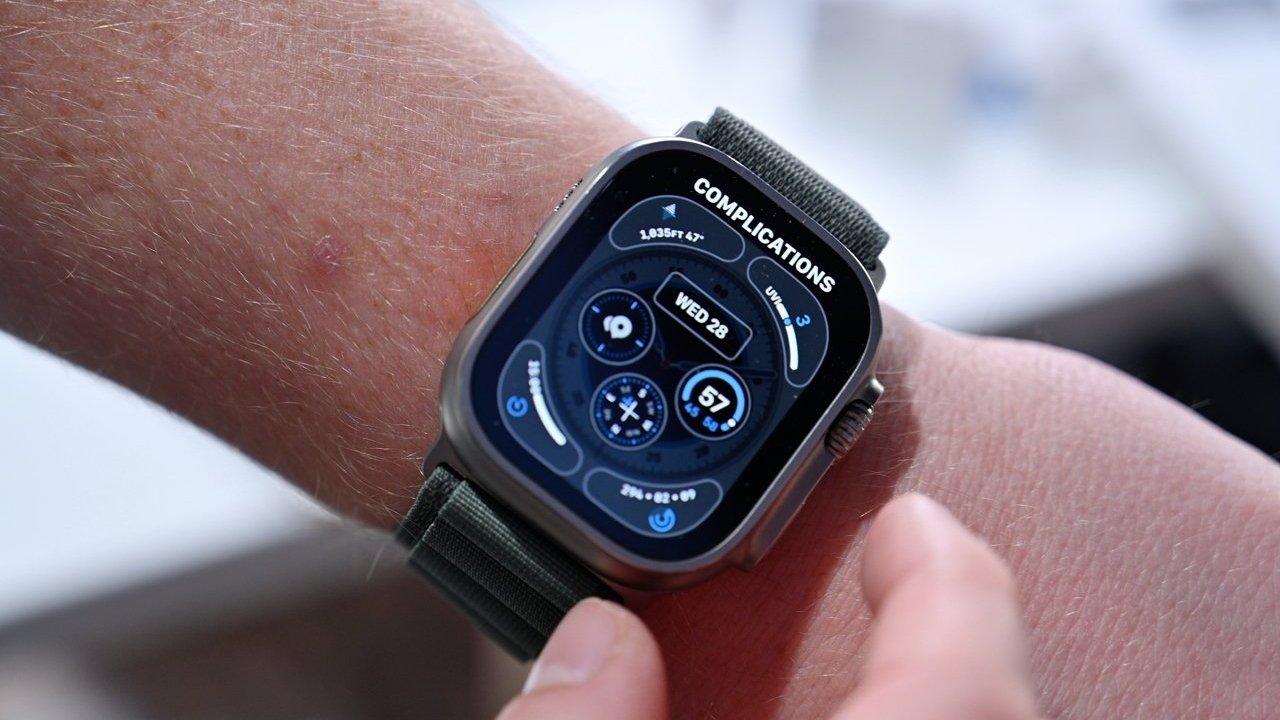Apple will use 3D printing to make Apple Watch Ultra mechanical parts
The next edition of the Apple Watch Ultra will feature titanium mechanical parts where some have been produced by 3D printing to save time and cost, says analyst Ming-Chi Kuo.

The first-generation Apple Watch Ultra
Apple is not likely to be turning to consumer 3D printers for the new Apple Watch Ultra, but reportedly it will be moving away from its regular CNC machining process, at least in part. Computerized Numerical Control (CNC) is the process of taking CAD designs and automatically manufacturing the parts by cutting at the material.
Analyst Ming-Chi Kuo says that Apple will continue to use CNC and that it will even be used to finish off elements of the 3D printed mechanical parts. But by moving to 3D printing, Kuo says that Apple can speed up the time taken for production -- while simultaneously cutting down on costs.
2H23 New Apple Watch Ultra mechanical parts to adopt 3D printing technology; key suppliers including IPG Photonics, Farsoon and BLT / 2H23Apple Watch Ultra3DIPG Photonicshttps://t.co/PngNIIihC9
-- (Ming-Chi Kuo) (@mingchikuo)
In his full report, Kuo goes on to speculate that Apple will adopt 3D printing for other products. As well as the same savings in time and cost, he believes it will help improve on Apple's ESG performance -- the Environmental, Social and Governance metrics that concern a company's sustainability.
A second generation of the Apple Watch Ultra is expected to be announced in the fall, possibly alongside the Apple Watch Series 9.
Read on AppleInsider

Comments
of us Hypertensives.
This article is bogus. 3D printing is only used for prototypes.
But y'all knew that, right?
3D printed parts are already in use everywhere. Dentures have been 3D printed for decades now. 3D printed parts are even in use in space. Get educated.
- design iPhones and iPads like the Fair Phone (completely modular and user repairable) and give up some of the IP ratings as a compromise.
- design the iMac so that it can function as a standalone monitor for other devices and allow users to swap the ‘computer’ side of the iMac and take the old in for recycling.
- design the Mac Studio and Mac Mini to be completely user repairable / components replaceable.
Obviously the Watch is the hardest one to adjust since it’s supposed to be waterproof and the components are tiny. At least the battery should be user replaceable.
If there was some gov't action to be done, I think I would mandate that a company producing a product is also responsible for ensuring the product materials are recycled and or compostable, else-wise, they can't sell them, and they will be audited by gov't agencies and third parties to ensure they are doing so. The single most important thing about recycling is getting the product to a proper recycling state and process, and actually getting that product when EOL to a recycling facility. The latter isn't done that well by anybody.
I'm not so sure that making products user-serviceable is actually environmentally friendly. Seems more often than not, it just means loads of extra components in people's drawers and companies' warehouses until they are dumped into a landfill. I would need to see some data that says user-serviceable products actually is net-net more environmentally friendly. Other-wise, all it seems to mean is a larger number of components produced that aren't properly disposed of nor recycled.
And, the gov't should also outlaw plastic and foam of all kinds too. It really should be aluminum (or other recyclable metal), glass, and paper-based products. All water bottles, milk jugs, juice bottles, have to be in aluminum or glass containers. Maybe at minimum, those plastic/oil lined paper based containers. Plastic bags should straight up be banned.
Just because a few DIY nerds can’t readily swap out batteries doesn’t mean they’re doing poorly, whatsoever. Edjamacate yourself.
Here's a large part;
https://www.youtube.com/watch?v=yb_cHMtl3g0
increased part complexity and weight reduction are the key advantages of 3D printing over other production processes, and in fact many parts are hybrids of 3D printing, machining, and fabrication. it appears that Apple with take advantage of 3D printing to increase part complexity ultimately reducing part count and assembly costs, and likely will finish machine some surfaces for precise fit.